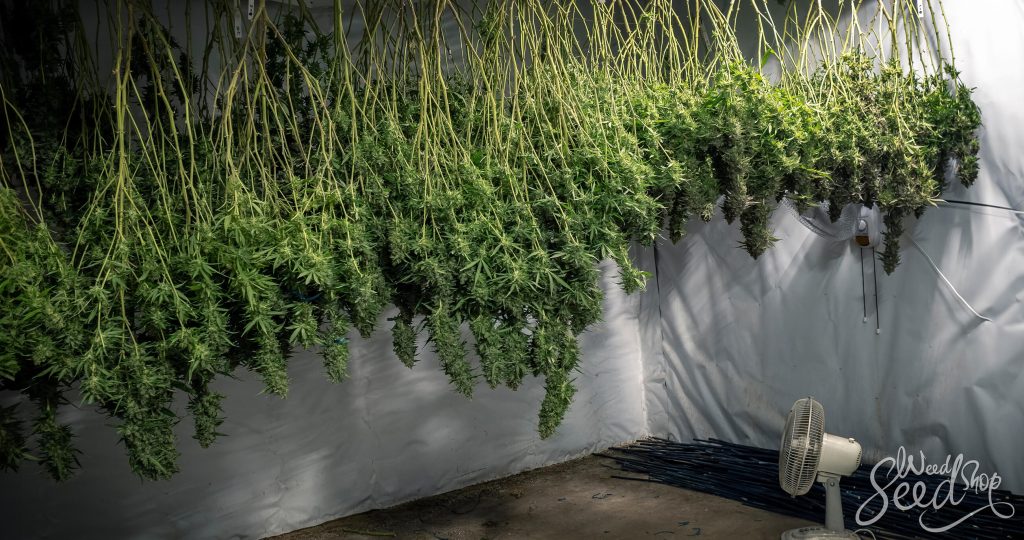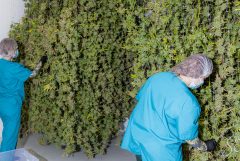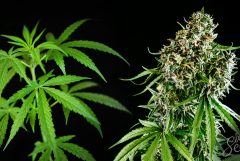The art and science of growing weed have evolved significantly over the years. One method that’s been getting a lot of attention lately is perpetual harvesting. By following the steps outlined in this guide, you can ensure multiple harvests of ripe buds throughout the year, regardless of the season.
- What is perpetual harvesting?
- What do I need for a perpetual harvest?
- How much space do I need?
- Can I perpetual harvest outdoors?
- Can I use hydro for perpetual harvests?
- What strains are good for perpetual harvesting?
- Should I use clones or seeds?
- How do I set up a perpetual harvest system?
- What is a perpetual harvest schedule?
- 3 Tips for successful perpetual harvesting
Growing weed can be a slow and tedious task. After all, there’s simply no rushing Mother Nature and plants will be ready when they’re ready. However, perpetual harvesting lets growers decrease the frequency between harvests. With a bit of setup, you can harvest new plants as often as you want.
What is perpetual harvesting?
As the name suggests, perpetual harvesting is all about creating a continuous cycle of growing, harvesting, and replanting. Going down this route is labour-intensive but offers several benefits, such as maximising yield and productivity, maintaining a consistent cannabis supply, and avoiding the feast-or-famine cycle of traditional harvest methods.

Unlike traditional growing schedules that involve planting, growing, and harvesting to completion before starting again, perpetual harvesting involves staggered planting and harvesting schedules to ensure a steady supply of cannabis. The main idea behind perpetual harvesting is to have multiple plants at various stages of growth simultaneously; i.e. some in the vegetative stage and others in the flowering stage.
By carefully timing planting and harvesting, growers can create an unending cycle where mature plants are harvested while new plants are being grown, resulting in a consistent harvest schedule year-round.
What are the benefits of perpetual harvests?
Maximising yield
If you can harvest more plants, you can grow more weed; it really is just that simple. Also, since a perpetual harvest requires much more space (more on that later), you can fit more plants into your flowering zone.
Consistent supply
Since you’re harvesting every few weeks, you’re never far from restocking your supplies. Even if you somehow do manage to smoke three plants’ worth of weed in less than a month, you’ll already be drying or trimming your next harvest.
Room to experiment
If you’re only growing and harvesting a few plants at once, it’s hard to feel comfortable trying something new. After all, no one wants to waste months of work on something that might ruin your plant. But, if you’re harvesting every other week, you can mess around knowing that any mistake will quickly be replaced by another plant soon enough.
Does perpetual harvesting have any downsides?
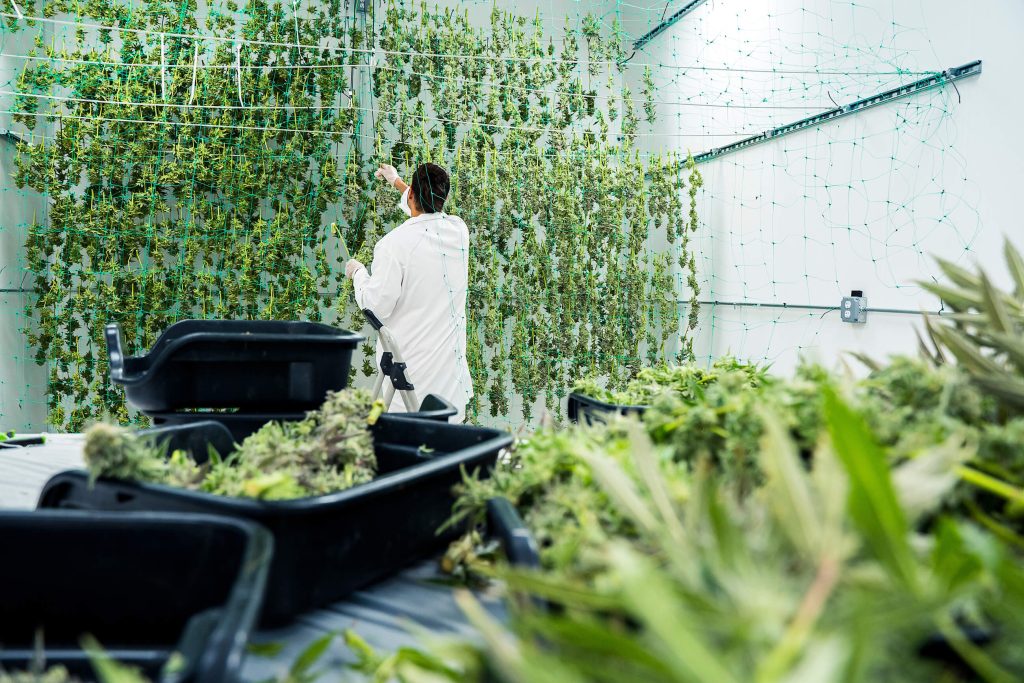
No system is perfect and perpetual harvesting is not ideal for newer growers. Even experienced gardeners can find themselves overwhelmed by the sheer volume of work required. While many commercial growers find the costs worth it, home growers and hobbyists should know what they’re getting into before they start.
High upfront cost
Getting a single grow space started can be an expensive task. Starting two is even more so. The need for extra tents, fans, lights, and soil to run them all contributes to a significant upfront cost.
Space invasive
Since you need two separate grow spaces, you’ll need to allocate far more space for a perpetual harvest. You don’t need twice as much space—the vegging tent can be smaller and shorter—but you do need enough room for two full grows.
Labour intensive
Harvesting, drying, and trimming plants is a tedious and time-consuming chore. Luckily, it’s the kind of thing most people only do a few times a year. If you’re planning on perpetual harvesting, you’ll constantly be in the process of cutting, trimming, or curing. It never ends.
What do I need for a perpetual harvest?
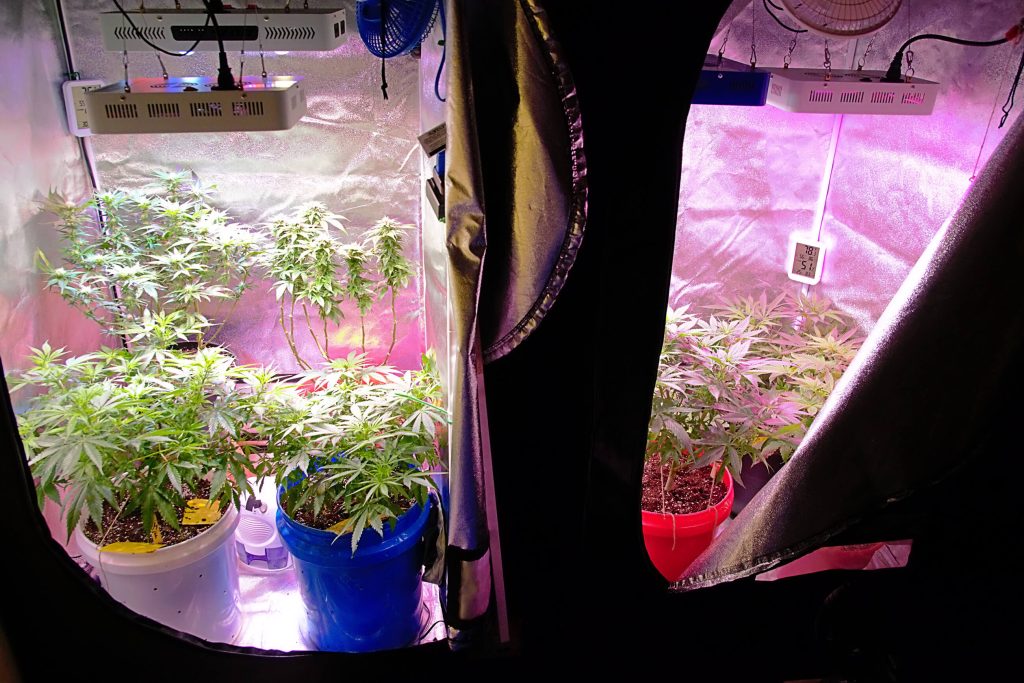
Even if you’ve already got a fully operational grow space, you’re going to need to make some serious adjustments to pull off a perpetual harvest. That’s because to get the most out of this system, you need two grow spaces—one for vegging and one for flowering.
How much space do I need?
As you’re going to be keeping some plants vegging while others are flowering, you’ll need two separate grow spaces. Exactly how large these each need to be will depend on your space and needs. Keep in mind that flowering plants require far more space than vegging ones, so even though your veg tent will hold more plants, it doesn’t necessarily need to be any larger.
If you have a large enough single space, you can fit both veg and flower into the same room, but you’ll need to take extra steps to ensure no light spills into the flowering side of things.
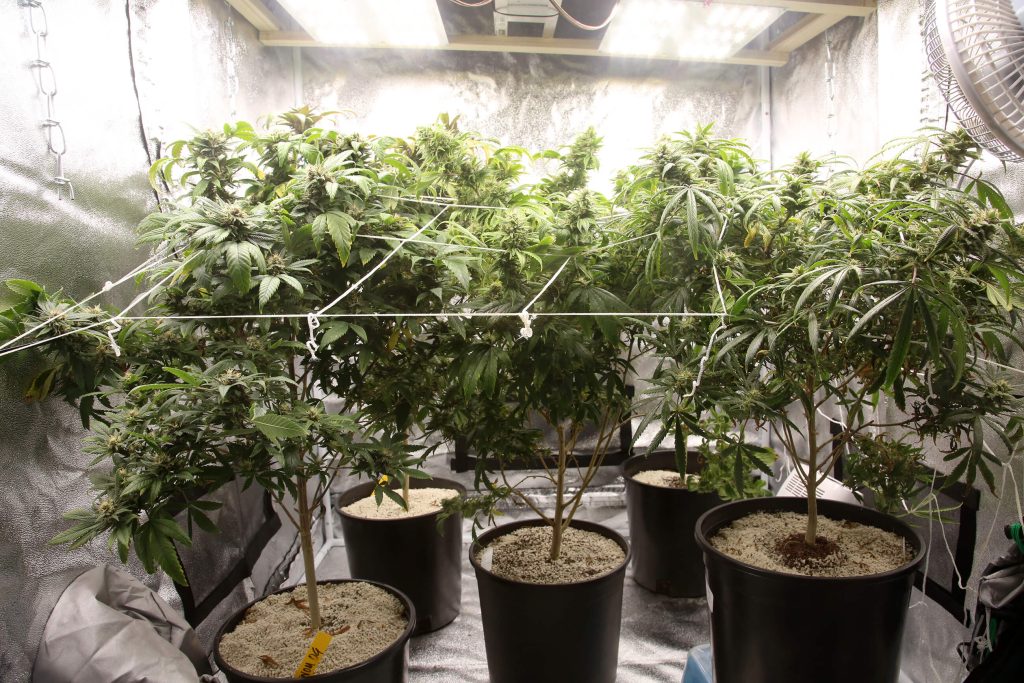
It’s also worth noting that if you’re using autoflowering plants, you can do all of this in a single room without any need for separation, but we’ll get more into that further down. Once you’ve got your two spaces set up (see our in-depth guides for how to set up a grow space), you’re all set.
Can I perpetual harvest outdoors?
Kind of. If you’re in an area where the weather permits growing all year long (usually in the tropics, near the equator), then you can potentially use your outdoor garden as the flowering chamber all year long. Even then, though, you’ll still need a separate vegging area (almost certainly indoors) or you’ll need to use autoflowering seeds.
While you may choose to bring your plants outdoors during the right time period (early in the season for vegging, later for flowering) it’s not a reliable option for the entire year. You’ll need an indoor space (or two) and you’ll probably find it’s easier to just keep things there all year long.
Can I use hydro for perpetual harvests?
Perpetual harvesters are generally going to opt for soil over hydro. This is because the plants will need to be moved fairly regularly and transplanting a hydroponic plant can be a real challenge. On the other hand, plants grown in soil are fairly easy to move to a new or larger pot as needed.
What strains are good for perpetual harvesting?
When setting up a perpetual harvest, it’s important to pick a strain and stick with it. Consistency and regularity are crucial, so making sure that your plants are all on the same schedule is absolutely vital. With that said, you can use almost any strain for a perpetual harvest, but there are several things to consider.
Flowering time
How long your plants will need to spend in the flowering tent will dictate your entire schedule so make sure that you pay close attention to it. There’s no real benefit to a shorter or longer flowering time once you get up and running as you’ll be constantly harvesting either way.
Growth pattern
Since you’ll be moving your plants constantly, you want them to stay at a manageable size. Shorter plants with single colas are often the best choice. Strains like Critical Kush and WSS Skunk make great choices for this reason.
Should I use clones or seeds?
There are pros and cons to each and ultimately it will come down to personal preference.
Clones
Clones provide the most consistency in height, structure, and schedule. Since these are all vital in a perpetual harvest, many growers opt for this method. However, it does require more time and effort to properly take clones and get them going.
Seeds
Tried and true, seeds are always a viable option for any grower. They don’t take as long to start growing as clones, but they are less predictable. Even seeds from the same batch can produce plants of different sizes.
How do I set up a perpetual harvest system?
Now that we’ve gone over what it takes, how do you actually make it happen? Let’s start with how to set up your two grow spaces.
The vegging tent
This is where your plants will spend the first several weeks of their lives and taking the time to set it up right will help out down the road. Your veg tent needs everything that any other grow tent requires: lights, fans, and ventilation.
- This tent can be much smaller and shorter as you won’t have large plants in here.
- The lights here don’t need to be nearly as powerful as in your flowering tent. Also, vegging plants prefer bluer light, and many LEDs are designed specifically for this.
- You’ll need room for several smaller plants as opposed to a few larger ones.
- A small oscillating fan is important to give the plants just enough stress to grow thicker stems.
- Vegging plants should be kept between 60-70% humidity and at temperatures of 25-30° C.
At the end of the day, almost anywhere can be set up as vegging area with little more than some lights and a few pots.
The flowering tent
This is where the magic happens. As such, you’ll need to take much greater care of this area.
- Your flowering tent must be completely lightproof to let your plants properly bloom.
- Since your plants will be at different stages of flowering, your lights will need to be at different heights. Make sure that you can easily move your plants around within the tent as they grow taller.
- Battling heat, humidity, and smell is key at this point. Proper ventilation (out of the tent, not just internal fans) is an absolute must.
- Flowering plants should be kept between 40-50% humidity and at temperatures of 20-25°C.
We’ve got a much more in-depth guide to flowering weed that has all the specifics of what you’ll need in this tent.
What is a perpetual harvest schedule?
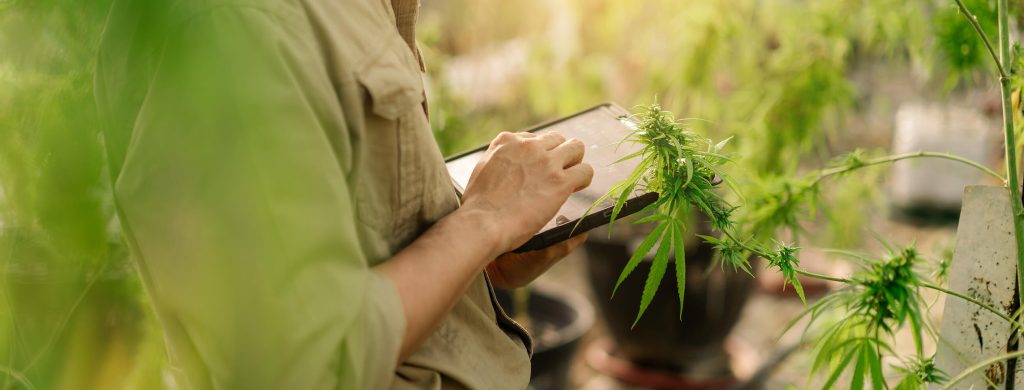
To establish a consistent cultivation and harvest cycle, follow these steps. Start with a modest number of plants, around four to begin with. Allow them to grow and develop for a period of approximately one to two weeks, considering the specific strain and desired harvest frequency. Then, gradually introduce an additional set of four plants into the mix. Repeat this process until your vegging tent is optimally filled.
Once the vegging tent reaches its capacity, it’s time to transition the initial four plants to the flowering tent. Don’t forget to keep adding new plants to the veg tent to maintain a continuous cycle. After a few weeks, the subsequent set of plants will be ready for the flowering stage, and so on.
When the first batch of four plants has matured, it’s time for harvest. Give it a couple of weeks, and then proceed to harvest the next four. This cycle can be repeated indefinitely, allowing for a perpetual cultivation and harvest rhythm.
By following this approach, you can establish an efficient and ongoing system for cultivating and harvesting your plants, ensuring a steady supply of quality produce.
Now, there’s no limit to how regularly you can harvest. Many growers will actually veg every plant at once and then move them all to flowering at once. This will allow for harvests every 8 weeks or so instead of every other week.
Autoflowering seeds perpetual harvest schedule
If you’re growing autoflowering seeds, just follow the exact same steps as above. But you don’t need to bother with swapping tents.
3 Tips for successful perpetual harvesting
Getting a perpetual harvest up and running (smoothly) may be a challenge but with a bit of work, it’s certainly possible.
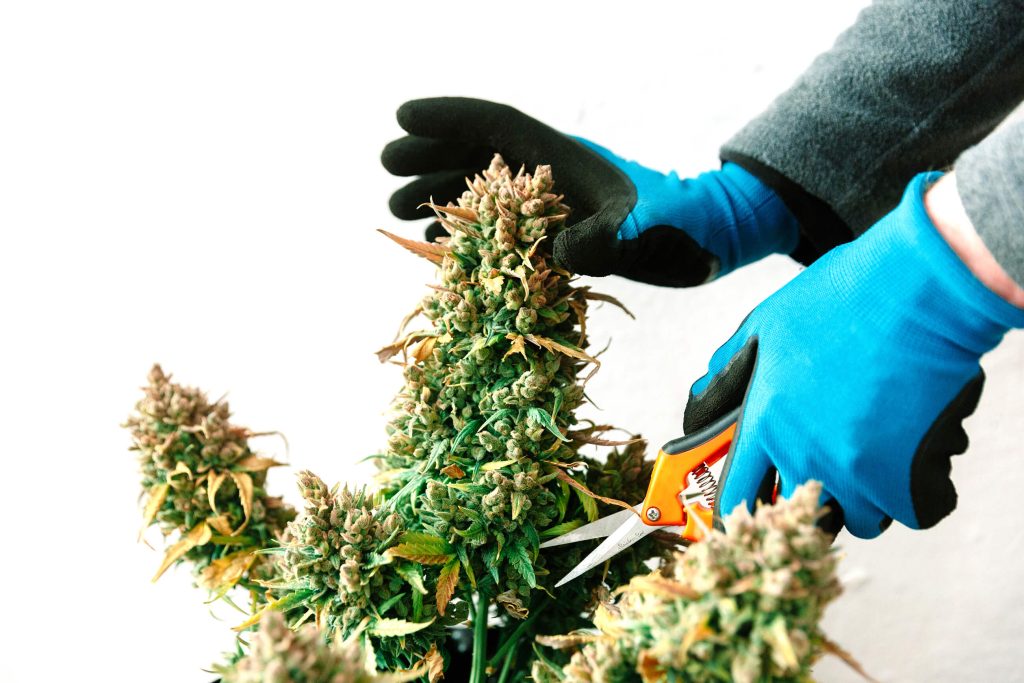
1. Keep a detailed schedule
One of the most important things you can do here is to maintain a detailed schedule and keep accurate records. With multiple plants at different stages of growth, it’s crucial to have a clear plan and timeline for each of them. Before planting, create a calendar or spreadsheet to track key milestones such as seed germination, transplanting, and harvesting dates.
This guide will serve you well in planting new plants and harvesting mature ones. Further, record-keeping is necessary for tracking the performance of different strains, nutrient schedules, and environmental conditions.
2. Lifelong learning
Growing weed is both an art and a science. As such, the field of knowledge of constantly expanding. Therefore, it’s essential to stay up to date on all of the latest techniques, research, and industry trends. Continual learning is key to maximising the success of your perpetual harvest.
Get involved in online forums, attend workshops, and engage with other growers to exchange knowledge and learn from their experiences. Experiment with different cultivation methods, nutrient formulations, and training techniques to find what works best for your specific setup. Keep an open mind and always be willing to adapt your techniques based on new information.
Remember, perpetual harvesting is a dynamic process, and being flexible and adaptable will help you optimize your yields and quality over time.
3. Monitor closely
Getting the best results from perpetual harvesting means closely monitoring and adjusting key parameters throughout the grow. Regularly check environmental conditions such as temperature, humidity, and airflow to create an ideal growing environment. Monitor pH levels and nutrient concentrations in your growing medium to ensure plants receive the right balance of essential elements.
Pay attention to lighting schedules, adjusting the intensity and duration of light as plants progress through different stages. Keep a close eye on plant health, checking for signs of pests, diseases, or nutrient deficiencies, and take immediate action before a small issue turns into a big one.
In short, perpetual harvesting requires a fair amount of space, time, and labour and isn’t something that novice growers should attempt. However, those with the space, patience, and know-how can see their annual yields skyrocket.
Have you ever run a perpetual grow? What issues did you have? Would you recommend it? Let us know in the comments!




